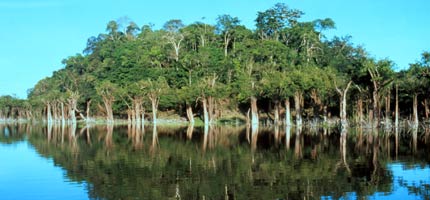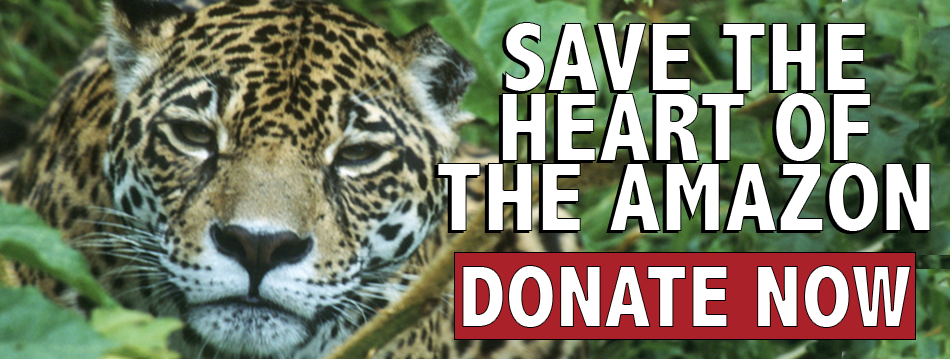
As the largest remaining rainforest on the globe, the Amazon rainforest is one of the most diverse ecosystems in the world. It is vast, stretching across 7.8 million km2, 5 per cent of the Earth's surface and several South American countries. However, over 60 per cent lies within Brazil's borders, and it's here that we're focusing our efforts to protect this rainforest.
Almost half of all known species live in the Amazon, and it contains around 20 per cent of the Earth's fresh water. It contains a staggering 15 per cent of all land-based plant species with as many as 300 different tree species in a single hectare. By comparison, the UK has less than 40 native trees in the entire country. This enormous array of plant life helps the rainforest to play a vital role in maintaining biodiversity and influencing climate.
The soya frontier
Sadly, the Amazon is experiencing one of the highest rates of deforestation on the planet. Between August 2003 and 2004, an area the size of Belgium was destroyed by logging and agricultural expansion. According to the Brazilian government's own estimations, up to 80 per cent of logging in the Brazilian Amazon is illegal.
Cheap timber is not the only driver of deforestation. As Brazil's agriculture industry booms, areas of rainforest are cleared to provide land for crops such as soya which is exported to feed livestock in the UK and Europe.
The Amazon states of Para and Mato Grosso witness some of the worst forest crimes. Loggers, working with false permits or ignoring legal restrictions, destroy the rainforest then abandon it to cattle ranchers and crop farmers. The quality of the soil deteriorates rapidly and it becomes fit for nothing but poor grazing or farmland, providing few economic opportunities for local communities.
Corruption and slavery
Fuelling this cycle is a state of lawlessness in which land invasions and illegal occupancy of public land are backed by violence and even murder, such as that of Sister Dorothy Strang in 2005. Such crimes are hardly ever investigated, and slave labour is often used to clear the forest.
To combat these threats, we have an office in the heart of the Amazon where we work with local communities and IBAMA, the Brazilian Ministry of the Environment's enforcement agency. We map the forest to track incidents of illegal logging and investigate the activities of the domestic and international companies involved.
But the fight to save the Amazon rainforest doesn't end at the edge of the Amazon. In the UK and other countries, we find out where exports such as soya are heading and who is buying them. We can then take action to expose their role in forest destruction and work with these companies to find alternative and lasting solutions.
As a result of our campaign to expose the danger that soya cultivation poses to the rainforest, we secured a two-year moratorium on the trading of soya from newly deforested areas. It's an amazing success but the moratorium needs to be extended and made permanent. We are working with companies like McDonald's and soya exporter Cargill and the Brazilian government to make sure no more forest is lost at the expense of soya farming.
We need your help though. Find out more about what you can do to help protect our remaining ancient forests.



